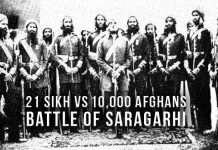Humayun’s Tomb (Tomb a Humayun Turki – Humayun Kabri) is a tomb of Mughal ruler Humayun, built in Delhi India. In 1569-70 Humayun’s son Akbar recognized this and was designed by Persian Mirza Ghias, a Persian architect who was chosen by Bega Begum. It is the first Garden-Tomb of the Indian.

Located in Nizamuddin East and nearby old fort which was founded by Mughal ruler Humayun in 1533. It is the first tomb to be used red stones in construction. In 1993, this tomb declared a UNESCO World Heritage Site and since then this Tomb is famous all over the world. There is a small monument built in the Humayun’s tom, as we enter in the tomb from southern gate, we can see small monuments.
It was considered one of the most popular tombs in India. Humayun’s tomb comes in one of the most famous heritages in Mughal Period, and charbagh garden, which seems like a Persian garden.
History of Humayun’s Tomb:
After Humayun’s death on January 20, 1556, first his body was buried in Delhi’s old fort. He later brought Khangar Baig to Sirhind in Punjab because he feared that the Hindu King Hemu, who had defeated the Mughal army in Agra and Delhi in October 1556, did not damage to the tomb by acquiring that old fort. In 1558, the tomb was supervised by his son Mughal ruler Akbar. Akbar visited the tomb in 1571, when it was almost completely formed.

Humayun’s tomb was constructed by the order of Akbar, the third ruler of the Mughal Empire, after nine years of his death, it’s work began in 1565 and work completed in 1572 AD, at that time the cost of construction of this tomb was about 1.5 million rupees. Humayun’s wife Arnav Deorukar helped him a lot. Bega Begum gave the money to build the building and grave. When Humayun died in 1556, Bega Begum had a great regret for her death and that is why she decided to make a tomb-e-humayun in Humayun’s memory. According to Ain-e-Akbari, a documentary was made on this tomb during Akbar’s reign in the 16th century.
According to a contemporary historian Abd al-Qadir Bandaiuni, this tomb was built by the Persian architect Mirak Mirza Ghias (Mirza Thiyahuddin), who was called specifically to this tomb from Herat, Bukhara (in present-day Uzbekistan). He designed the several buildings of India and Herat too. He died before the completion of this building, but son Syed Muhammad ibn Mirraq Thiyaudin completed his father’s work and the tomb completed in 1571.
An English merchant, William Finch, came to see the tomb in 1611, he later told about the artworks of the tomb in the interior of the tomb, the marquee, grave and the walls. He has written that the inner room of the central chamber was full of different rugs.
Humayun’s Tomb Interesting Facts:
- Humayun’s body was buried at two separate places in Humayun’s tomb.
- An English merchant, William Finch, came to see the tomb in 1611, he later told about the artworks of the tomb in the interior of the tomb, the marquee, grave and the walls. He has written that the inner room of the central chamber was full of different rugs and rugs, there was a pure white awning on top of the graves and kept holy books in front of them. Along with this Humayun’s turban, sword and shoes were held.
- The tomb design was made according to Persian and Indian traditions.
- Humayun’s tomb has about 150 graves which are surrounded by a garden.
- Humayun’s tomb constructed keeping in mind the Taj Mahal.























with more information? It is extremely helpful for me.